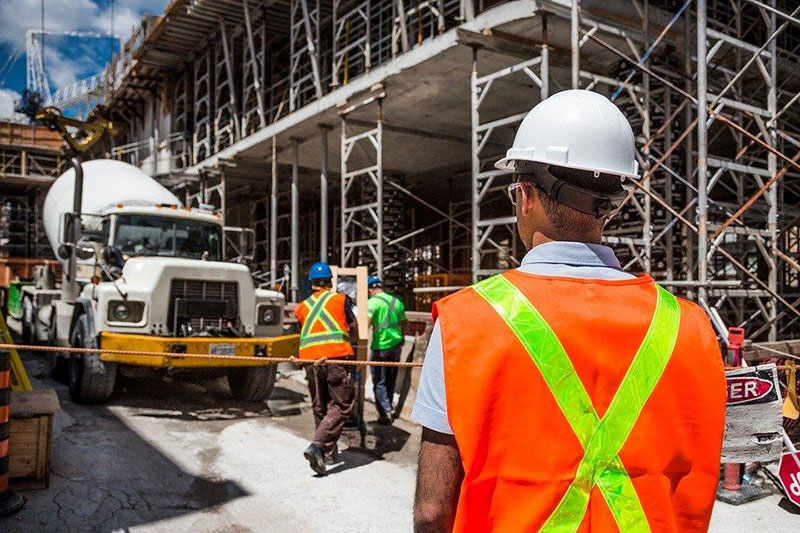The construction industry has suffered one of the most prolonged periods of slowness since the global financial crisis. This is a popular fact.
You have probably heard of the statistics. The construction industry is quickly losing skilled labor due to an aging workforce, slow to adopt new technology, and lagging behind in productivity.
Fortunately, the construction industry is slowly regaining strength. With increasingly scarce resources, there’s a need to create more using less.
From virtual reality to BIM, here are some of the latest tech trends in the construction industry.
The Rise of Digital Solutions
Construction companies have discovered the advantages and changed behavior patterns with face-to-face interactions less frequent.
They adopted more digital solutions and digitized their workflows. This, together with a major shortage of people, is ultimately driving the biggest changes towards a bigger acceptance of technology.
Today, the construction industry has realized the benefits that technology can deliver. This is particularly true for medical injection molding companies.
Nowadays, the construction industry will keep on seeing challenges with a lot of projects always at risk of going over budget and over time.
In 2022, tech-enabled collaboration technologies will keep on disrupting the industry, with plans and paper drawings being replaced so that data is constantly updated.
Data Visualization
In 2022, people will see greater professionalism in the construction industry. This is particularly true when it comes to the use of construction project scheduling software for big-scale projects.
Creating a 3D digital twin, together with a collaboration platform and cloud-based storage, will mean project teams can collaborate, share, and visualize with colleagues and clients in the cloud.
Because of this, people should see an increased use of collaboration platforms, automation solutions, cloud-based software, and Smart Build solutions that connect clients, project stakeholders, and partners.
Drones and Robotics
Compared to other industries, the construction industry is greatly less automated. Manual-intensive labor is its main source of productivity.
The lack of automation is because of the fact that robots need controlled environments that involve repetitive tasks and no variables.
However, as the construction industry keeps on evolving in terms of technological progress, the use of drones and robotics will keep on rising.
A couple of examples of how robotics and drones can be utilized in the construction include:
- Improved Quality and Productivity
Construction companies can use robots to replace repetitive tasks. This includes bricklaying. With this, companies can improve the quality of work and efficiency.
- Improved Safety
Construction companies can utilize drones to monitor sites and find possible risks and enable managers to view the site without going there in person.
The manager can simply sit in a comfortable OEM plastic chair and view the site using drones.
Smart Digital Reality
With the capability of accessing HD 3D information, creating Smart Digital Realities, and visualizing projects, construction companies can understand their current environments better.
They can envision and simulate the future of their communities, cities, and towns.
In 2022, construction companies will no longer think in terms of the digital and physical aspects as two separate entities.
This smart digital reality improves the whole construction industry. The use of the information will deliver built environments with better performance, at a lower cost, and lower impact on the environment.
This can only occur if the information is gathered, connected, and leveraged across all stages of the building process.
Advancements in AI
Analytics, machine learning, and AI keep on advancing and affecting the construction industry. Today, companies can use AI to keep track of the real-time interactions of objects, machines, and workers on a construction site.
Companies can also use AI to alert supervisors of productivity problems, construction errors, and possible safety risks.
Technology, such as reality capture solutions and smart construction cameras, will increasingly be adopted on sites to offer easy access to construction imagery and data.
With this, construction companies can easily streamline project management.
Sustainable Construction
With the increasing concern about the environment, the construction industry is planning to adopt technologies that will help lower its contribution to the climate crisis while improving productivity.
In 2022, construction companies, engineers, and architects will search for new methods to improve the life cycle of a structure and offer better solutions for eco-friendly operations.
People should see the proliferation of software solutions and new digital sensors, such as workflow tools, Building Information Modeling, and laser scanners.
These tools will help professionals make better-informed decisions and teams can work together more efficiently and accurately in real-time.
With this, companies can save materials and time. This results in less waste and higher profitability.
Collaboration and Automation
People should expect to see more digital collaboration and automation. Due to the improvements in automation such as reality capture, construction companies can digitize and capture information to share more frequently and easily.
This enables a constant feedback loop between the physical world and the digital world. This is particularly useful when working with PTFE parts.
Conclusion
Throughout 2022, technological advancements in the construction industry are expected to improve at high speeds.
These technological trends will drastically change how the construction industry operates its processes, making them more efficient, eco-friendly, and profitable.
